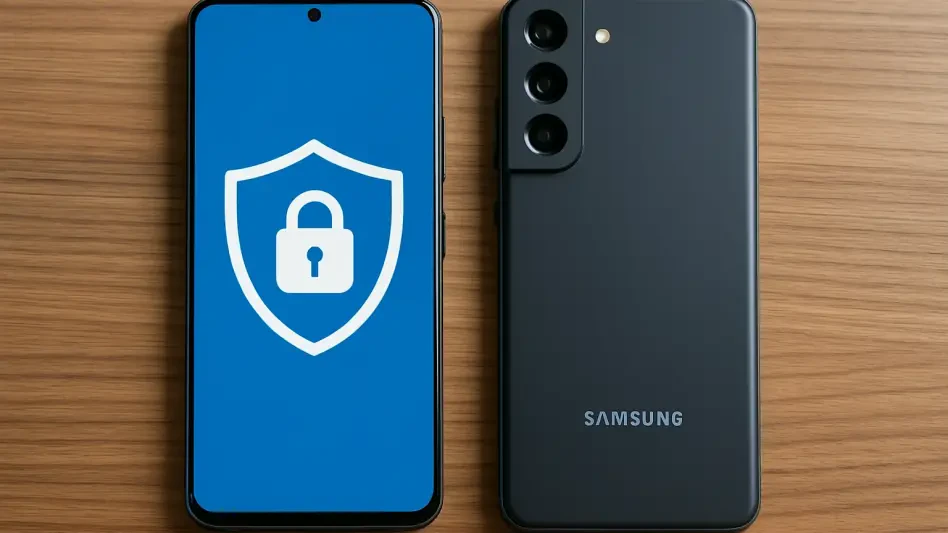Samsung Electronics, a dominant force in the global smartphone market, has recently sounded the alarm for Galaxy users around the world, pressing them to install a crucial security update released this September. This urgent call to action stems from the discovery of a severe zero-day vulnerability that could compromise millions of devices without any user interaction. Identified as a critical flaw in an image-parsing library, this issue allows attackers to execute remote code through something as innocuous as a shared image in popular messaging apps. With active exploitation already reported, the stakes couldn’t be higher for users of devices running Android versions 13 through 16, including the latest flagship models and older favorites. Samsung’s accelerated response outside its regular update schedule underscores the gravity of the situation, highlighting the ever-present dangers lurking in the mobile ecosystem and the pressing need for immediate user action to safeguard personal and professional data from potential breaches.
Unpacking the Zero-Day Threat
The core of this urgent update revolves around a zero-day vulnerability, cataloged as CVE-2025-21043, which exploits an out-of-bounds write issue in a third-party image-parsing library developed by Quramsoft. This flaw enables attackers to run malicious code on affected Galaxy devices simply by processing a corrupted image, often delivered through widely used platforms like WhatsApp. No user interaction is required, making it a particularly insidious threat that can strike silently. Devices running Android versions 13 to 16 are at risk, spanning a wide range of models from the newest releases to older flagships. Reports of active exploitation in the wild have pushed Samsung to prioritize this patch, emphasizing the real and immediate danger to millions of users. The ease with which this exploit can spread through everyday digital interactions amplifies its potential impact, turning routine communications into vectors for attack and exposing vulnerabilities in how devices handle seemingly harmless content.
Beyond the headline zero-day flaw, the September security bulletin from Samsung addresses nearly 100 additional vulnerabilities, showcasing the complex and multifaceted nature of modern cyber threats. Of these, 44 issues originate from Google’s Android framework, while 23 are specific to Samsung’s proprietary software, illustrating the layered challenges in securing mobile ecosystems. Cybersecurity experts have noted the sophistication of such exploits, where a single unpatched device can serve as an entry point for broader network intrusions. This comprehensive patch not only tackles the critical zero-click issue but also fortifies defenses against other high-severity risks that could compromise user privacy and data integrity. The breadth of fixes included in this update reflects a growing trend of attackers targeting diverse aspects of mobile software, necessitating a robust and rapid response from manufacturers to stay ahead of evolving threats and protect users from potential fallout in an increasingly interconnected digital landscape.
Challenges in Mobile Security Ecosystems
One recurring theme in this incident is the persistent vulnerability introduced by third-party libraries within mobile software. The Quramsoft library flaw serves as a stark reminder of how proprietary components can become weak links if not rigorously vetted or promptly updated. Social media discussions among cybersecurity professionals highlight a consensus that such libraries, often integral to device functionality, frequently lack the scrutiny needed to prevent exploits. The exploitation through popular apps further compounds the risk, as end-to-end encryption offers no protection against client-side parsing errors. This gap in security can indirectly expose billions of users through shared content or connected devices, creating a ripple effect of potential harm. Samsung’s swift patch rollout is a step in the right direction, but it also shines a light on the broader challenge of ensuring that all components of a device’s software stack are secure against increasingly sophisticated attack methods.
From an enterprise perspective, the implications of this vulnerability are particularly concerning, given the widespread use of Galaxy devices in bring-your-own-device (BYOD) policies across industries. A compromised phone could leak sensitive corporate data or provide attackers with a foothold to navigate deeper into organizational networks. While Samsung has prioritized the update for flagship models before rolling it out to mid-range tablets, delays in carrier-locked devices may leave significant security gaps for some users. Experts strongly advocate for enabling auto-updates and vigilant monitoring to ensure the patch is applied as soon as it is available. This situation draws parallels to past systemic issues within Android’s fragmented update ecosystem, where deployment delays often exacerbate risks, leaving users exposed during critical windows. Enterprises must therefore adopt stringent policies to mitigate such threats, balancing flexibility with the imperative to maintain robust security in professional environments.
Looking Ahead: Strengthening Defenses
Samsung’s transparent communication and accelerated response to this crisis have garnered commendation from industry observers, yet questions linger about long-term strategies to prevent similar incidents. Analysts suggest that stricter audits of third-party code and deeper collaboration with Google could help standardize defenses and reduce the window for exploits. There is also talk of Samsung integrating AI-driven threat detection into future iterations of its One UI platform, an innovation that could proactively identify and neutralize risks before they escalate. However, the feasibility of implementing such advanced measures at scale remains uncertain, given the diverse range of devices and user environments. The incident underscores the need for a proactive rather than reactive approach, pushing manufacturers to anticipate vulnerabilities in an era where cyber threats are becoming increasingly complex and adaptive to existing security protocols.
Reflecting on the broader implications, this incident serves as a critical reminder of the shared responsibility between manufacturers and users in maintaining mobile security. Samsung’s September update successfully addressed a dangerous zero-day flaw alongside numerous other vulnerabilities, but it also exposed persistent challenges in the reliance on third-party components and the fragmented nature of update rollouts. The company’s rapid and open response was a positive step, yet it highlighted the ongoing cat-and-mouse game with cybercriminals who continuously evolve their tactics. Moving forward, users are encouraged to prioritize timely updates to protect their devices, while enterprises need to enforce strict security policies. For Samsung and other tech leaders, the path ahead involves not just innovation but a commitment to ironclad security measures to rebuild and sustain trust, ensuring that past lessons inform stronger defenses against the relentless and ever-changing landscape of digital threats.








